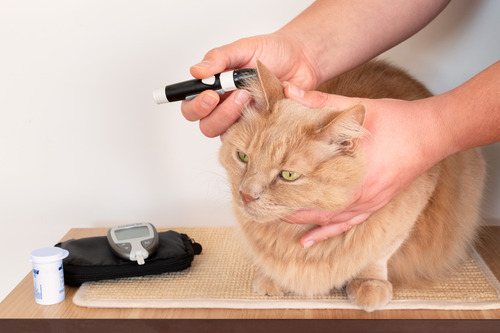If your cat has been diagnosed with diabetes, understanding their behavior changes can be crucial for their well-being. Diabetes in cats can lead to a variety of behavioral shifts that may seem concerning to pet owners. Recognizing and interpreting these changes can help you provide the best care for your feline friend. In this blog, we will explore diabetic cat behavior in detail, offering insights into what you might observe and how to support your cat during their diabetes management journey. If you have concerns about your cat’s behavior, call McGehee Clinic for Animals at (901) 682-5684 or request an appointment online.
Common Behavioral Changes in Diabetic Cats
Increased Thirst and Urination
One of the most noticeable changes in diabetic cat behavior is increased thirst and urination. Diabetes causes a cat’s blood sugar levels to rise, leading to excessive thirst (polydipsia) and increased urination (polyuria). You may find your cat drinking water more frequently and for longer periods. This behavior can result in more frequent trips to the litter box, and in some cases, accidents outside the box. Monitoring your cat’s water intake and litter box habits can help you manage their condition more effectively.
Changes in Appetite and Weight
Diabetes can also affect your cat’s appetite and weight. Some diabetic cats may experience increased hunger (polyphagia) while losing weight despite eating more. This paradox occurs because their bodies are unable to use glucose properly for energy. As a result, they may constantly seek food but still appear thin and undernourished. Conversely, some cats might lose their appetite entirely. Keeping track of your cat’s eating habits and weight is important for their health and can provide valuable information to your veterinarian.
Behavioral Signs of Hypoglycemia
Lethargy and Weakness
Hypoglycemia, or low blood sugar, is a serious condition that can occur in diabetic cats, particularly if they receive too much insulin. Lethargy and weakness are common signs of hypoglycemia. A cat experiencing hypoglycemia may appear unusually tired, less responsive, and reluctant to engage in normal activities like playing or grooming. Immediate veterinary attention is crucial if you suspect your cat is hypoglycemic.
Seizures and Disorientation
In severe cases, hypoglycemia can lead to seizures and disorientation. These symptoms are alarming and require urgent medical intervention. A cat having a seizure may collapse, twitch uncontrollably, or lose consciousness. Disorientation can manifest as confusion, stumbling, or an inability to recognize familiar people or surroundings. Understanding these signs and acting quickly can save your cat’s life.
Behavioral Changes Due to Diabetic Neuropathy
Difficulty Walking
Diabetic neuropathy is a condition caused by prolonged high blood sugar levels, leading to nerve damage. One of the primary symptoms is difficulty walking. Cats with diabetic neuropathy may have a wobbly gait, weakness in their hind legs, or an inability to jump. This condition can significantly impact their mobility and quality of life. Observing these changes early and consulting with your veterinarian can help manage the condition and improve your cat’s comfort.
Sensitivity to Touch
Cats suffering from diabetic neuropathy may also become sensitive to touch, particularly around their limbs and back. They may react negatively to being petted or handled, even if they previously enjoyed these interactions. This sensitivity can be a sign of discomfort and pain due to nerve damage. Providing a comfortable and stress-free environment can help alleviate some of this discomfort.
Psychological and Behavioral Adjustments
Increased Irritability
Diabetic cats can become more irritable or aggressive. The discomfort and stress caused by fluctuating blood sugar levels, frequent vet visits, and changes in their routine can contribute to this behavior. It’s important to approach your cat with patience and understanding, providing them with a calm and secure environment.
Changes in Grooming Habits
You might notice changes in your diabetic cat’s grooming habits. Some cats may groom excessively, while others may neglect grooming altogether. Excessive grooming can be a sign of stress or discomfort, whereas a lack of grooming might indicate that your cat is feeling unwell or is too weak to maintain their usual grooming routine. Keeping an eye on your cat’s grooming habits can give you clues about their overall health and comfort.
Supporting Your Diabetic Cat’s Well-Being
Understanding and managing diabetic cat behavior can be challenging, but with the right knowledge and support, you can help your cat lead a comfortable and happy life. Regular veterinary check-ups, proper medication, and a stable home environment are key to managing diabetes in cats. If you notice any concerning changes in your cat’s behavior, don’t hesitate to contact McGehee Clinic for Animals at (901) 682-5684 or request an appointment online. Our team is here to provide the care and support your cat needs.





